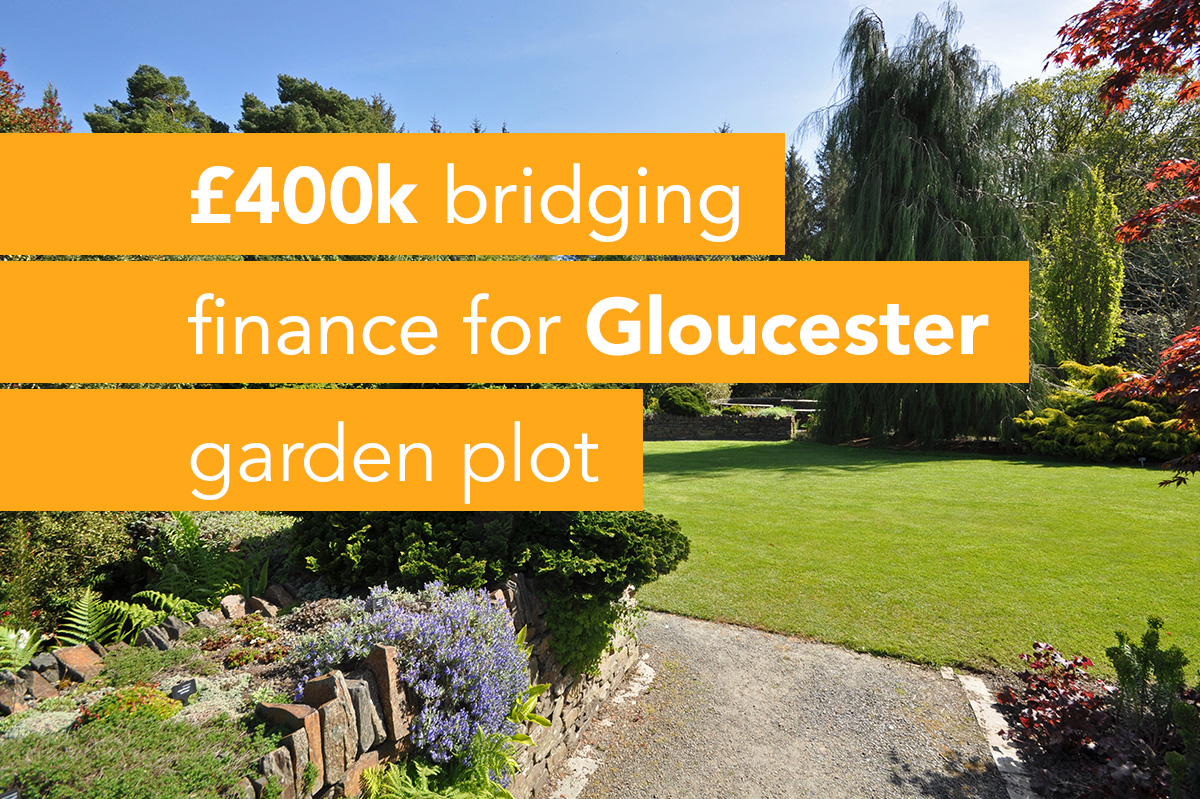Garden plot development opportunity with bridging finance in Gloucester
A couple, set to receive a lump sum of their pension pot in the next 3 months, were looking to purchase the property directly opposite in a bid to create a new development plot in between the two properties

The couple were looking to acquire the property and adjoining land adjacent to their home. Their vision was a clear long-term plan. The new garden combined with their large garden which had direct road access, had potential to become a new building plot.
By splitting the title of the property next door into a house with a small garden, and a separate larger piece of land, the property investors saw a potentially lucrative opportunity to either sell the land onto a developer or develop it themselves.
Until they wanted to develop that land they could simply refurb the neighbouring property and sell it on - the uplift in value from the renovation work completed would all but cancel out all costs incurred including renovation work, stamp duty and conveyancing.
They used their primary residence as collateral for the finance and coupled with savings, this enabled them to complete the first phase of their project.
A £400k bridging loan would be able to bridge the gap between their current resources and the funds required. Their pension, valued at £1.2 million after tax, was due for withdrawal within a short-frame - just three months and would be used to repay the bridge loan. The property value was at £410,000 and the couple required a bridge loan.
The key steps of their plan were:
- Purchase neighbouring property
- Split the title deeds into two
- Refurb the property and quickly get it back onto the market
- Repay the bridge loan once the pension is received
- Their main residence, worth £650,000, was used as collateral. The couple allocated £30,000 of their savings towards; splitting the title deeds, fees, and SDLT tax. The total finance requirement was £400k - equating to a loan-to-value (LTV) ratio of 68%.
The key advantages of developing on your own land
Ownership and control
Owners developing on their own land allows for complete ownership and control over the property. The owners can make decisions about land use, construction, and development without external interference.
Long-term investment: Owning land is often considered a long-term investment. Property values tend to appreciate over time, providing potential financial gains if the land is developed strategically.
Location and access
The location of the land can significantly impact its value and accessibility. Developing on this land allows owners to choose a location that meets specific needs, whether it's proximity to amenities, or transportation.
Potential income streams
Besides personal use, owning land provides opportunities for generating income through various means such as renting, leasing, or selling.
Leveraging pension assets to create development plot
The bridging loan, with the pension as the exit strategy, provided the necessary £400,000 to purchase the adjacent property and land, as well as any necessary renovation work. The assurance of the impending lump sum from the pension and using their existing property as security, gave the lenders the confidence needed to facilitate the loan.
When the time came, the pension payout seamlessly covered the outstanding balance of the bridging loan. The couple later recouped some of this sum through the sale of the renovated property and reduced garden.
Securing planning permission for property development project
With the successful completion of the initial phase of their property development project, the couple moved forward with the next steps in their plan.
Research and planning
The couple engaged with local authorities to understand zoning regulations, building codes, and other requirements for developing the land. This research was necessary in preparing a planning permission application.
Architectural considerations
Working with architects and designers, the couple formulated plans that aligned with local regulations and maximised the potential of the acquired land.
Submission and approval
The couple submitted their planning permission application, providing detailed plans, environmental impact assessments, and any other required documentation.
The approved plans aligned with their long-term vision for creating a development plot in Gloucester and if required, the couple could leverage the benefits of development finance to further capitalise on their land opportunity.
